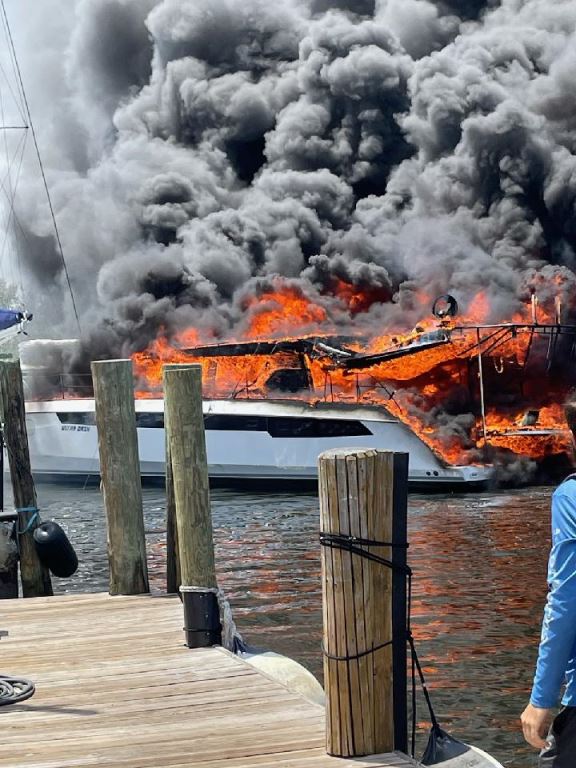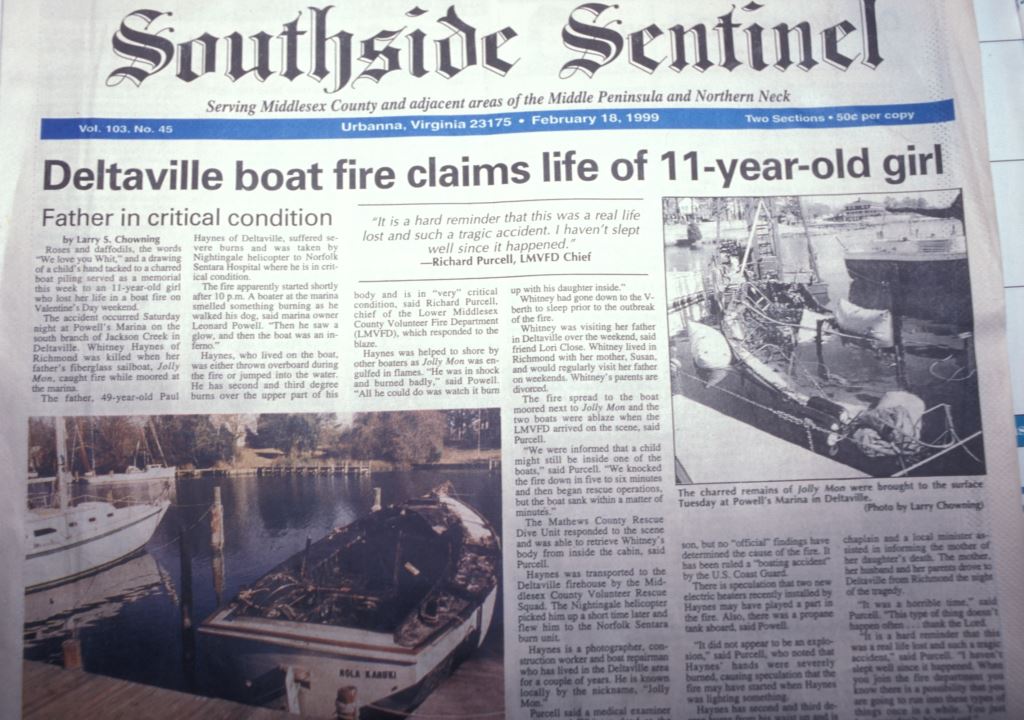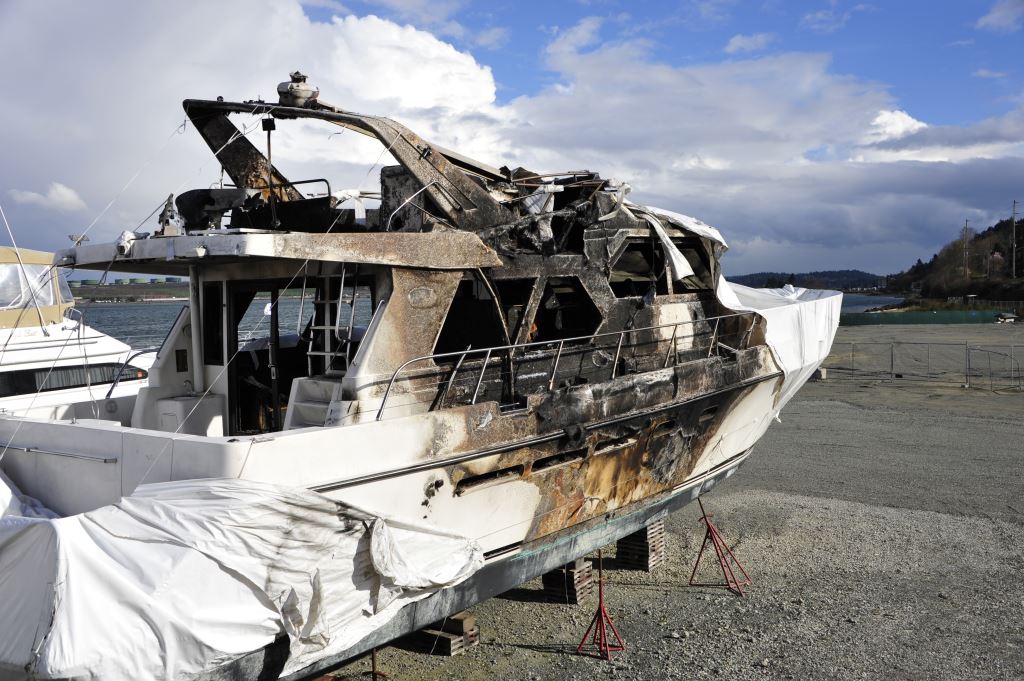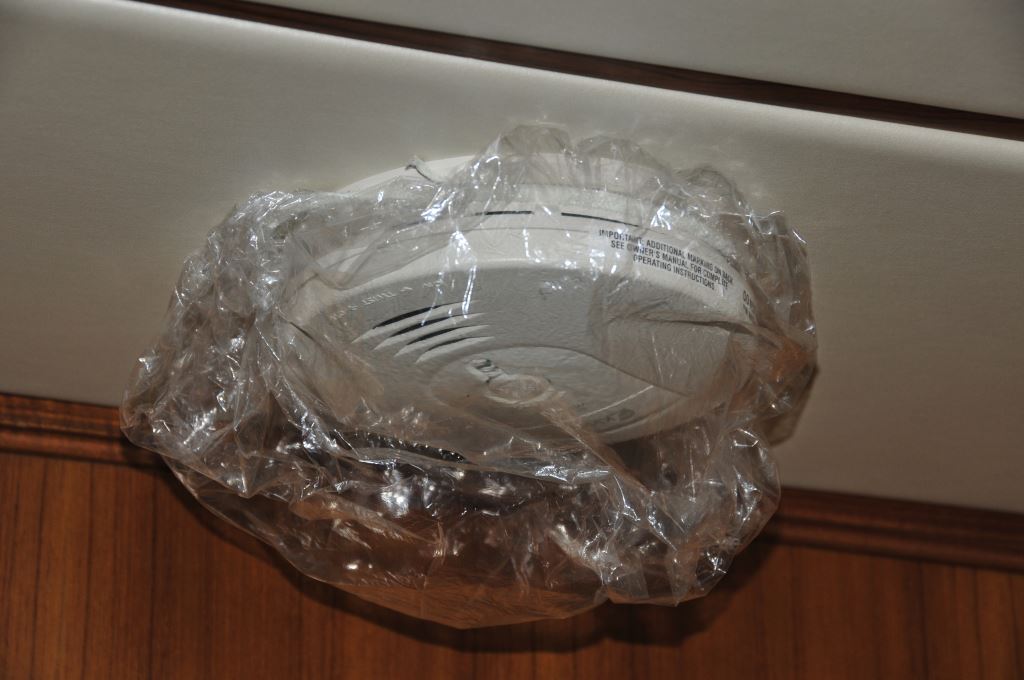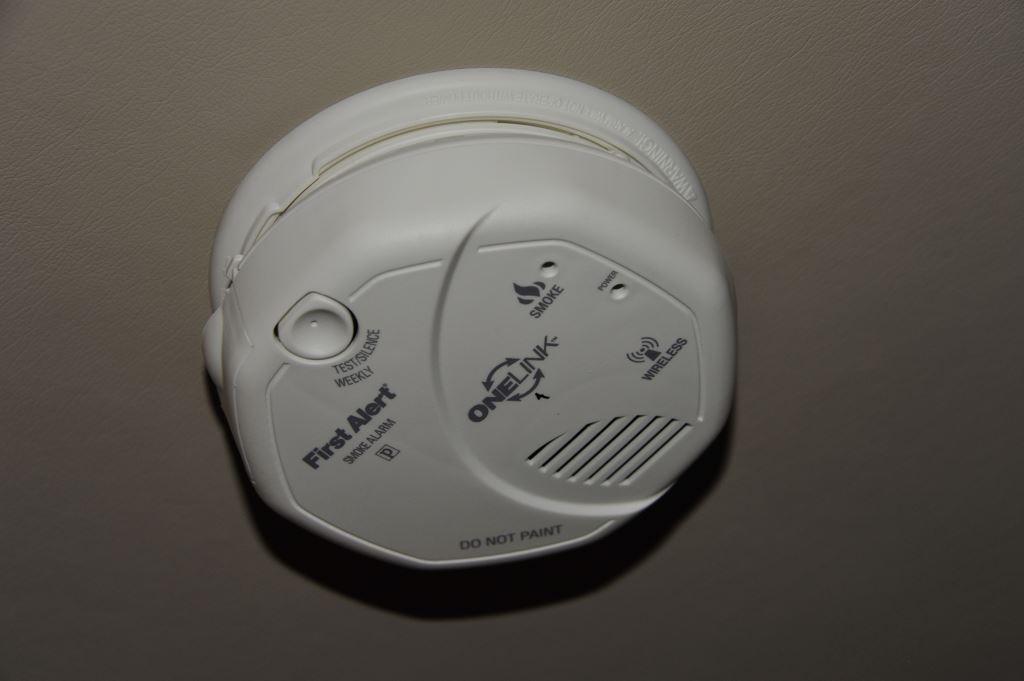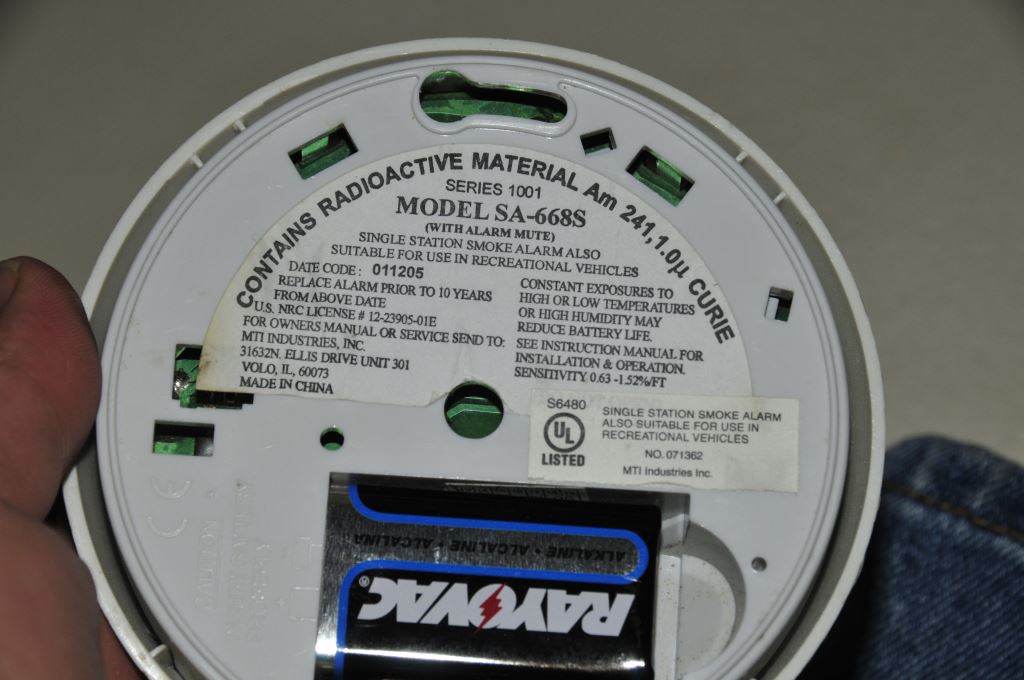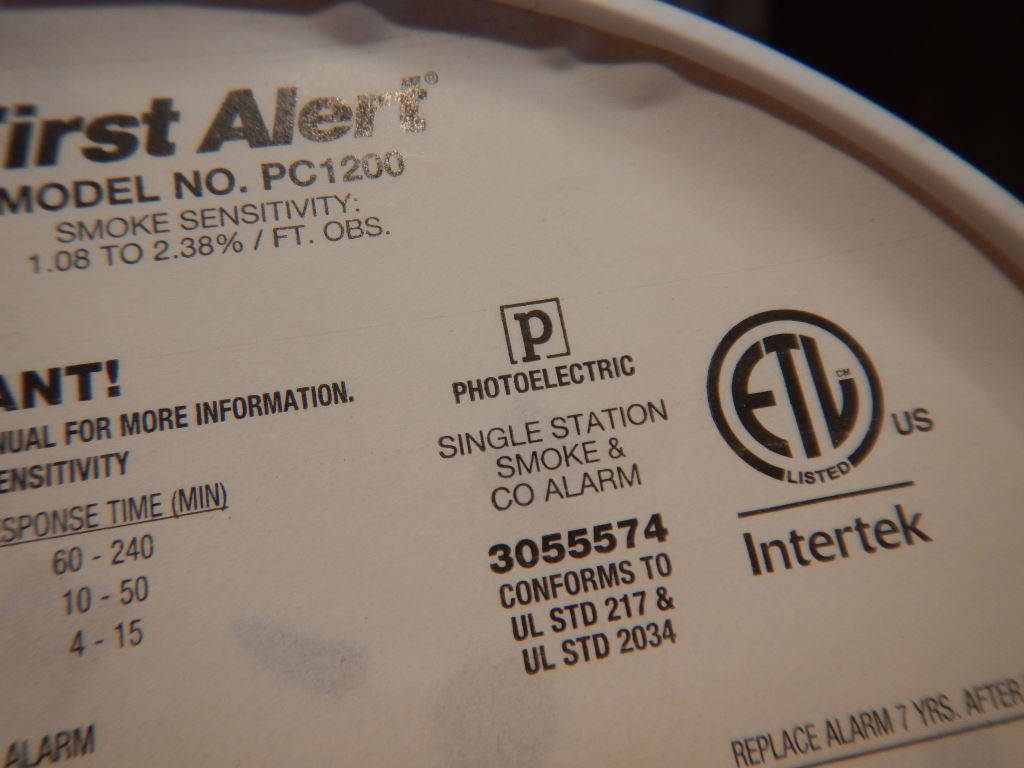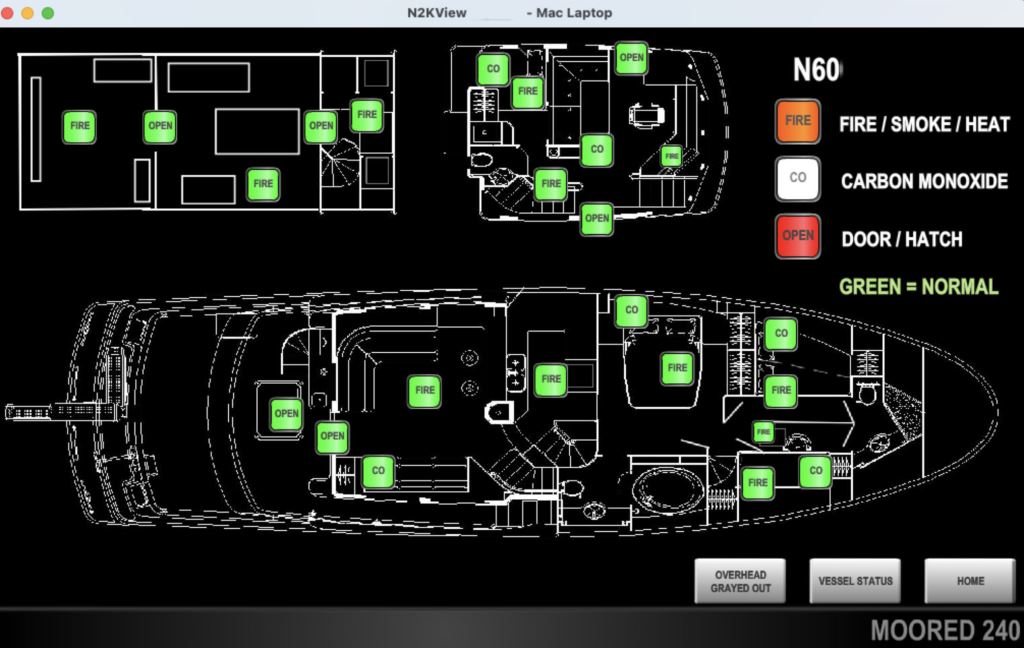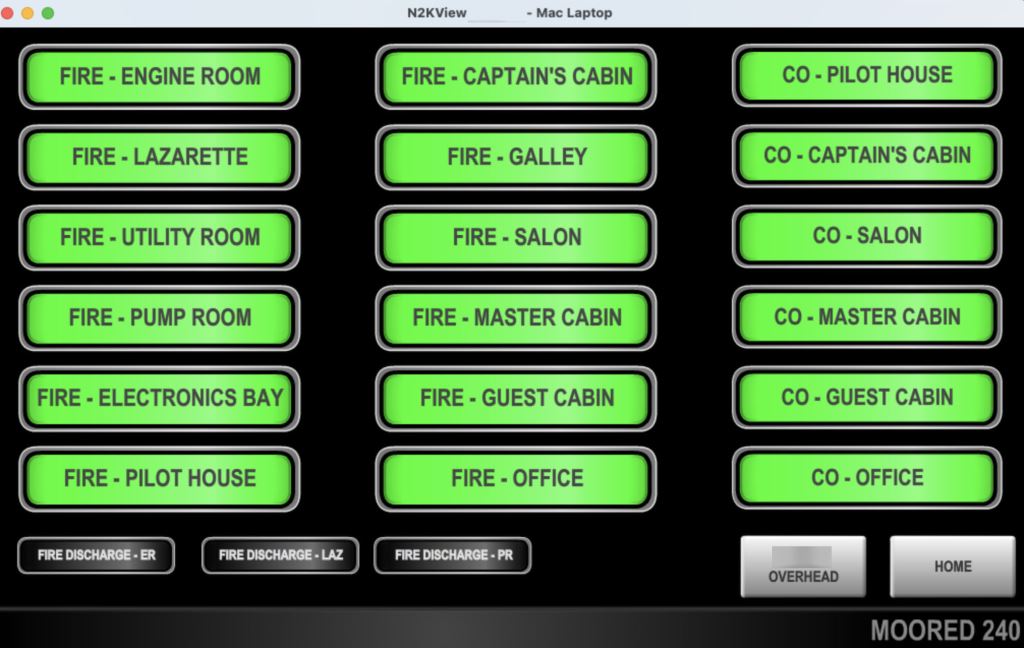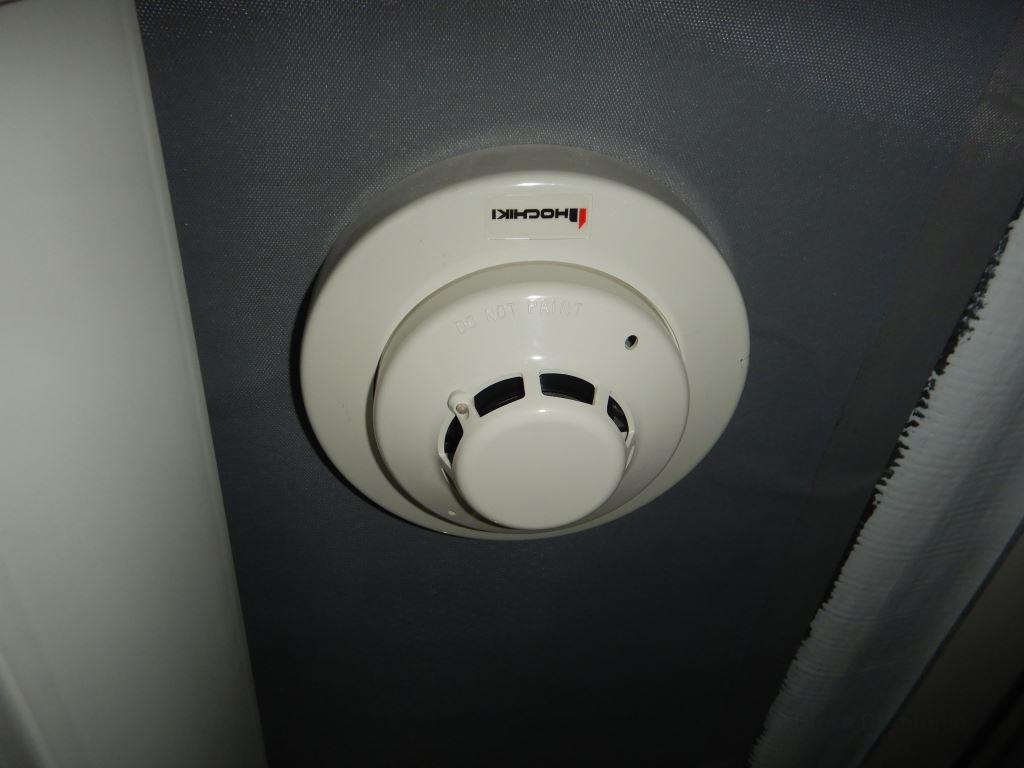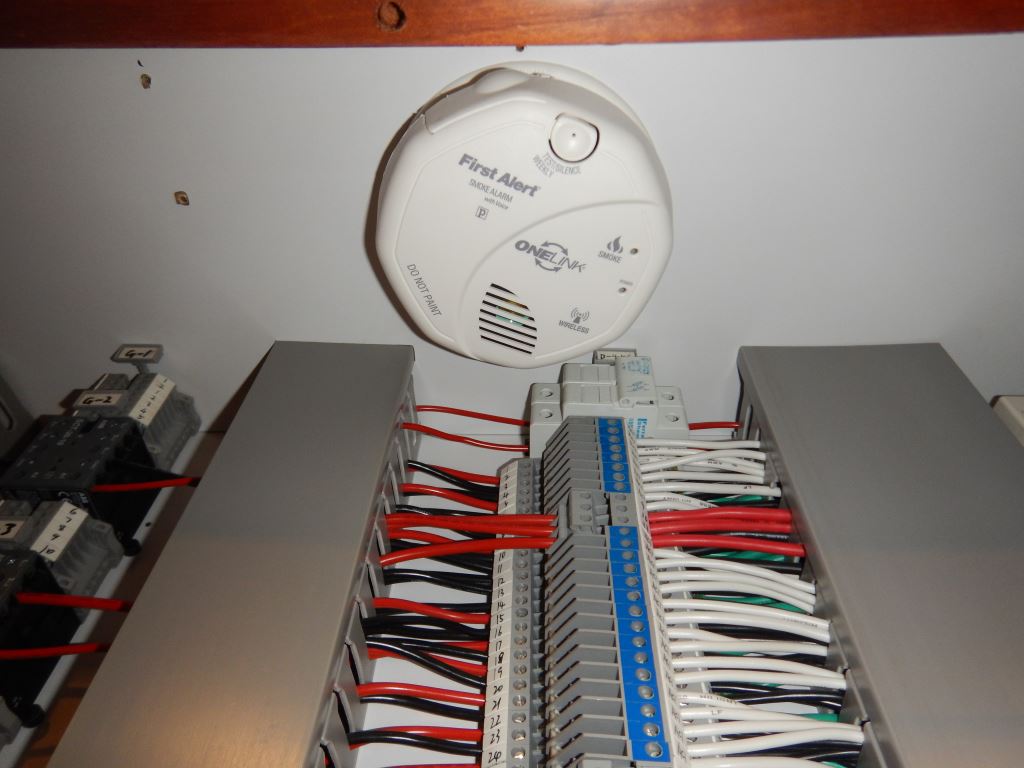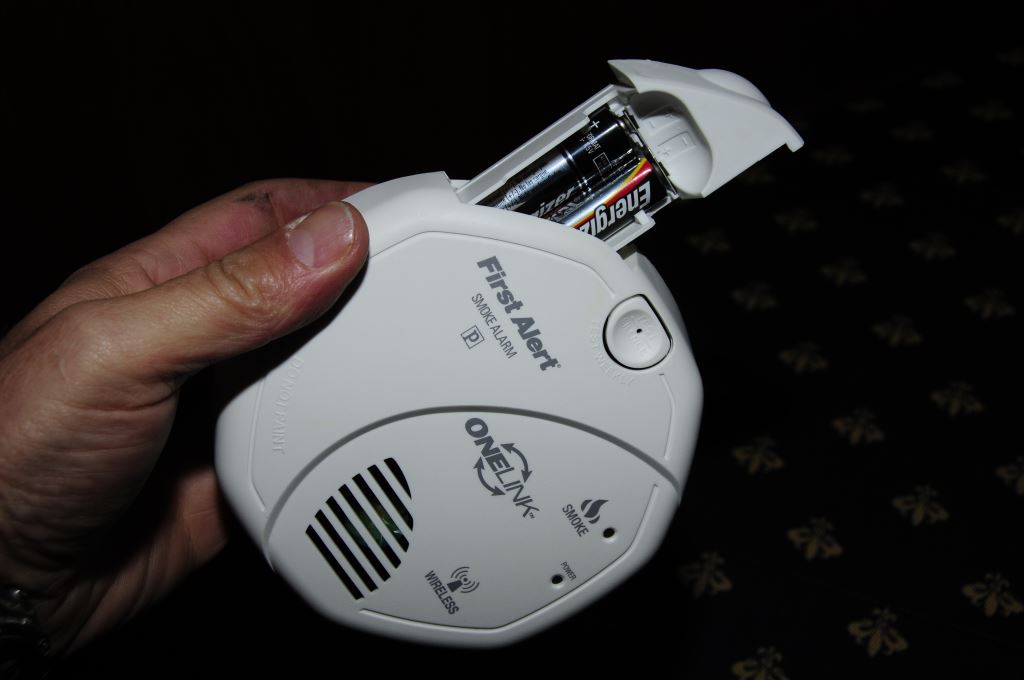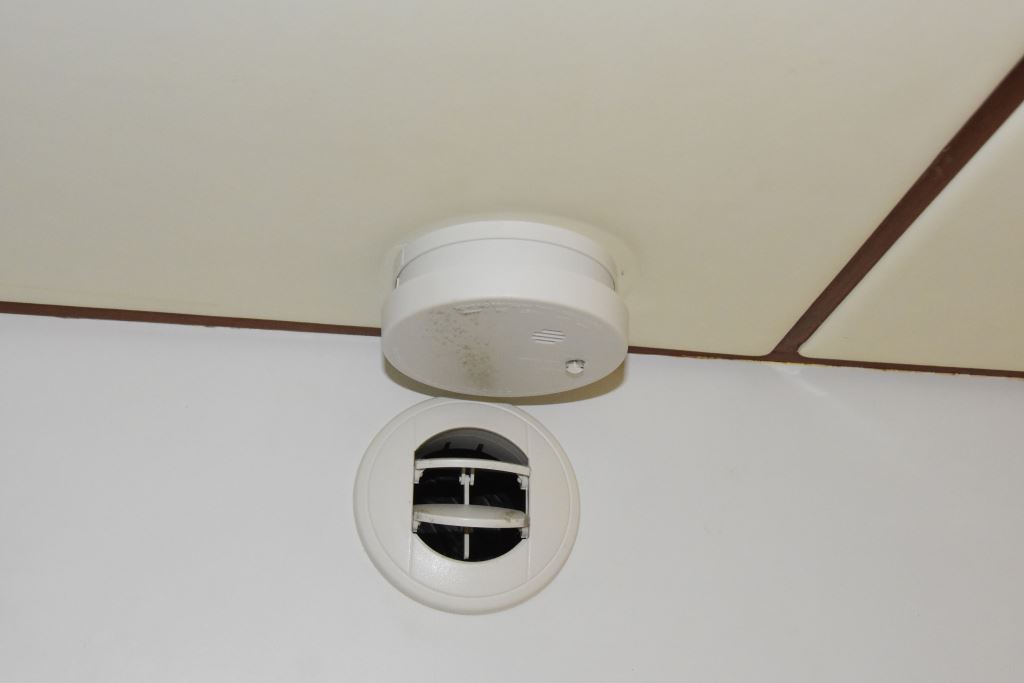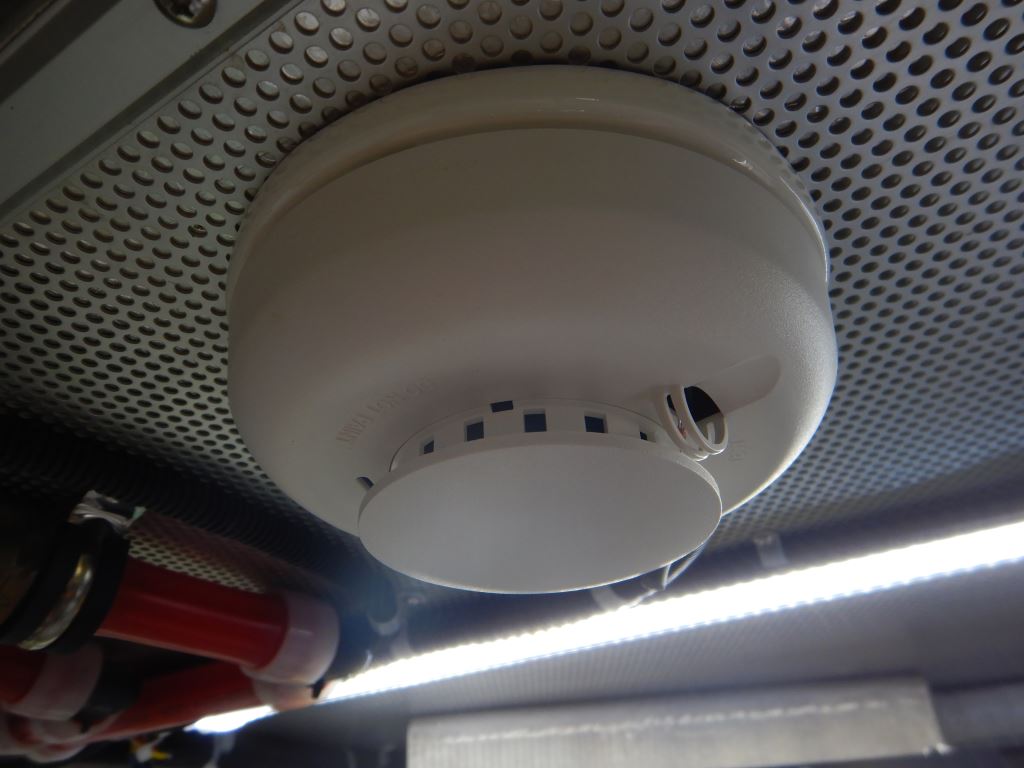The Need for Smoke Detectors – Editorial: Read the Contract
From the Masthead
Read the Contract
In the past few months I’ve received several calls from individuals who were preparing to take delivery of newly built vessels, inquiring about pre-acceptance inspections both at the yards abroad, and here in the States. The responses from their respective builders have run the gamut from, “Sure, we welcome another set of eyes” and “Tell us what you need” to, “No one ever does this”, “Why would you want to do this, don’t you trust us?” and shockingly “This will create a lot of problems and significantly delay your delivery”. Regrettably, this is nothing new, I’ve been hearing responses like these for years, although it’s encouraging to note that the defensive ones are becoming less common.
If you were building or buying a multi-million-dollar home, it would be unusual to not have it thoroughly inspected by a home inspector at the very least, or a builder-consultant, and perhaps even an architect, along with specialists for HVAC, plumbing, masonry, roofing etc. Doing so is no reflection on the builder’s trustworthiness, it’s simply accepted as standard practice. So why should building a boat be any different? In short, it shouldn’t, and because most vessels (other than those that are classed), unlike homes, are required to meet precious few mandatory construction standards, it’s even more reason to, as that old Russian proverb goes, ‘trust but verify’; and if the vessel is built to a standard or class, ABYC, CE, ABS. DNV etc. then you’d want to verify compliance, right? I routinely argue it’s in the builder’s best interest to have a third party catch issues before the vessel leaves the yard, or sails far from the commissioning facility, where repairs will be more difficult and more costly to undertake.
In the cases where buyers are discouraged from conducting inspections, I typically ask, “What does your build contract say regarding inspections and surveys?”. In those cases, almost invariably, the purchase agreement conspicuously excludes any mention of this all too important feature, which brings me to the title of this column; contracts and the importance of reading, and where necessary amending, them. I’ve covered contracts previously here.
If you are considering commissioning the construction of a new vessel, the build contract should be reviewed not by your business or personal attorney, not by an attorney with whom you golf, and not by an attorney you know from the yacht club, it should be reviewed by an attorney who specializes in yacht construction contracts, and especially those built overseas if that’s the case. Among other things, the contract should include provisions for inspections during the construction, by the qualified expert of your choosing, at the yard, and upon completion, but before you take delivery. Provisions should be made for the resolution of disputes related to the inspection or survey; this often involves calling on a trio of experts, at least two of whom can form a consensus on the item in question.
While I may disagree with it, I understand why some builders don’t embrace the notion of someone effectively looking over their shoulder, boat builders are proud and often feel as if no one is qualified to critique them; and I’ll readily admit some who are called upon to critique them aren’t qualified to do so. And yet, the benefit of the doubt must be given to the buyer, he or she is spending a great deal of money, and they should never sense any reluctance on the part of the builder to have their work properly scrutinized, by a qualified professional; and if you and the builder agree on a surveyor or consultant in advance of signing the contract, that represents a reasonable approach (I recommend that my clients include my firm, by name, in their contracts).
In my experience, builders who strive for the highest possible quality, welcome the observations of an independent expert, in many cases it’s tantamount to free consulting, and again it enables the builder to resolve issues before the vessel leaves their care.
In other cases, I’ve encountered builders who were reluctant because they were concerned (justifiably or not) about what might be discovered; that’s an unenviable scenario for both the buyer and builder, and one that should be revealed and resolved long before signing a build contract.
I travel all over the US, and the world, conducting inspections, on vessels that are under construction (when you read this, I’ll be in Italy working on one such project), newly completed or in brokerage. From time to time, I encounter grumbling and reluctance, however, most builders will admit, sometimes begrudgingly, it is not only a necessary evil, it may even be beneficial to them.
Any builder or broker who expresses reluctance, to allowing the qualified professional of your choice to inspect a product they have built or represent, should be asked to explain why they believe their hesitancy is justified, what possible reason could they have for not wanting their product scrutinized? Better builders have a ‘bring it on’ attitude; they want to know if they’ve missed something important, or if there’s a better way of going about achieving their goals.
The Need for Smoke Detectors
The speed with which onboard fires spread literally makes early detection a life-saver.
Several years ago a fire occurred aboard a small boat in a marina just a few miles from my home in Deltaville, Virginia. It was late fall; aboard were a father and his young daughter, enjoying one last night on the boat before the season came to an end. To stave off the autumn chill they relied on a space heater, a device which would ultimately prove to be the source of their demise. During the night a fault in the vessel’s wiring led to a fire, which ultimately took both their lives. While every boat fire gets my attention, this one remains with me because of the age of one of the victims, she was the same age as my daughter at the time, and like so many onboard fire fatalities, it was easily avoidable. First, if the vessel’s wiring had been ABYC compliant, it’s unlikely the fire would have occurred. Second, if the vessel had been equipped with smoke detectors, it’s likely the occupants would have been awakened in time to extinguish the fire, or evacuate; they’d be alive today.
Onboard fires are often deadly; a smoke detector could very well have prevented this tragedy.
With perhaps one exception, in the developed world you’d be hard-pressed to find a place to lay your head where you aren’t afforded the protection of smoke detection. Today, virtually every hotel, apartment, train, plane, commercial passenger vessel and ferry, along with most homes, are equipped with smoke detectors; the seemingly inexplicable exception…recreational power and sailing vessels.
The value of the protection a smoke detector provides is self-evident, smoke nearly always precedes fire and aboard a cruising vessel fire, along with flooding, is easily classified as among the worst of worst case scenarios. Early detection is the key to avoiding disaster in both cases; however, the consequences are certainly more serious where smoke and fire are concerned. If your vessel goes down you can don a life jacket and, hopefully, crawl into a life raft. Few vessels, however, are equipped with fire retardant suits or breathing apparatus. A smoke detector(s), therefore, becomes the first, and possibly most important, line of defense in dealing with the dangers of flame, as well as the toxic smoke it’s almost certain to cause when modern boat building materials burn. Interestingly, it’s also likely to be the least expensive.
Fiberglass and many other modern boat building materials are petroleum-based; they burn intensely, rapidly and are difficult to extinguish.
Once a fire takes hold, fire extinguishers, both portable and fixed, become the next and last option before abandoning ship; it’s one you hope you never have to use. Virtually every fire extinguisher, even the smallest economy models, cost more than most smoke detectors; smoke detectors are cheap insurance.
The Law and Standards
The Coast Guard, relying on the Code of Federal Regulations (CFR), chapter 46 guidelines, requires that smoke detectors be installed in the sleeping compartments of all small inspected vessels, vessels that carry paying passengers. Regrettably, and this comes as a surprise to many, no such requirement exists for uninspected, or un-classed, recreational craft, however, that’s no reason to forgo a smoke detector; they aren’t required in most private homes, and yet today few homes don’t have them. By the same token, there’s no requirement that mandates installation of electric bilge pumps, however, few vessel operators would knowingly put to sea without them.
If the Coast Guard inspected vessel guideline is voluntarily followed, then a smoke detector that meets Underwriters Laboratories standard UL217 is suitable for use aboard your vessel. The National Fire Protection Association document NFPA 302-13.3 “Fire Protection Standard for Pleasure and Motorcraft” calls for adherence to the same UL 217 standard in vessels over 26 feet. From my perspective, any vessel with a cabin in which those aboard may sleep, regardless of size, should be equipped with smoke detector(s).
It’s not uncommon to find galley smoke detectors disabled or covered. If false alarms are common, consider moving the detector further from the stove top; never remove batteries or otherwise defeat a smoke detector.
Selection
Most battery powered, self-contained household smoke detectors have a useful life of between eight and ten years; some are equipped with batteries that are designed to last for this entire lifespan, making battery replacement unnecessary. Most units alert users when this ten year time line is nearing its end, referred to as “end of life warning”. For marine use I recommend a 50% safety margin, replacing ten year units at the five year mark for instance. Again, for the cost this is still the cheapest smoke detection and fire safety insurance you can buy.
Because there is no legal mandate for recreational vessels, use of units that don’t necessarily meet the UL 217 standard is not prohibited per se, and in some cases units that don’t meet this standard have highly desirable features that simply cry out for use aboard a cruising vessel. These include those that utilize wireless, RF technology to trigger every smoke alarm installed aboard the vessel. I’ve installed and recommended RF wireless units for several years and know of at least three occasions where the system alerted users to a fire in the engine room or compartment long before it would have otherwise been noticed, and in time for it to be extinguished.
This smoke detector can be wirelessly interlinked with others aboard; if one sounds they all sound. This is especially useful for detectors located on out of the way places like engine rooms, lazarettes and other machinery spaces.
The detection method used for smoke alarms falls into two categories, ionization and photoelectric. In the former case, a very small and slightly radioactive source is used to detect smoke particles, triggering the alarm.
If you see mention of “radioactive material” in smoke detector labeling, it means it at least relies on ionization sensing technology. Note also the 10 year replacement interval.
Photoelectric detection, on the other hand, uses a light source, which is reflected by smoke onto a light sensitive panel, which again triggers an alarm. It is my strong recommendation that a detector be chosen that relies either on photoelectric sensing, or one that uses a combination of both photoelectric and ionization technology (this is also the recommendation of “Consumer Reports”). In my experience, those that use ionization alone are not well suited for shipboard fire detection.
The “P” shown on the backside of this smoke detector indicates it uses photoelectric sensing technology to sound the alarm.
Many household smoke detectors are available as combination units for smoke and carbon monoxide or ‘CO’. Aboard a boat using these in accommodation spaces makes very good sense.
While more costly and complex to install, wired and interlinked central station smoke detectors offer several advantages.
This Maretron System provides central station fire and CO monitoring, both aboard the vessel and remotely.
Chief among these is an immediate indication of where the smoke has been detected, and the ability to report an alarm remotely via SMS text, email or an automated voice call. The latter can be especially valuable for vessels that are unattended.
Central station, wired and interlinked alarms offer the added benefits of providing an immediate indication of the location of the smoke, as well as remote indication via SMS text.
Installation
Whichever units you choose, be sure to install one on both sides of every door in all berthing areas. That is, in the passageway outside a cabin door as well as inside the cabin. With this approach it becomes unlikely that a closed door could prevent an alarm from sensing smoke and sounding the alarm.
The aforementioned wirelessly interconnected units are especially valuable in marine applications. If the engine room-installed unit senses smoke, it sounds the alarm in units installed throughout the vessel, in the pilot house, saloon and berthing areas. Because the majority of fires that occur aboard recreational boats are electrical in origin, installing smoke alarms behind electrical panels, under dashboards, in lazarettes and over battery banks and electric thrusters also makes good sense.
Since the origin of most onboard fires is electrical, it only makes sense to place detectors behind all electrical panels.
Unfortunately, other than in 120 volt AC versions, hard-wired 12/24 volt DC smoke alarms designed for marine or RV applications are not readily available. We are, therefore, forced, for the time being, to use the internal battery powered variety. ‘Not a problem’, you might say, that’s how the household units are set up, they sound that impossible to ignore annoying chirp (the one in your bedroom is guaranteed to begin sounding at 2AM) for weeks when the battery begins to fail, which works just fine. However, most homeowners don’t vacate their homes for weeks at a time, and if the battery happens to go dead while you aren’t aboard for one of those extended periods, or during winter storage, it’s possible you’ll unknowingly return to a non-functioning alarm. Therefore, for these units, it’s critically important that you test monthly, and replace batteries seasonally for all smoke/CO detectors aboard.
Smoke and CO detector batteries must be replaced when indicated by the alarm or, better yet, seasonally.
Is there any good reason to not install smoke detectors aboard your boat? I believe the answer is a resounding “No”.
Sidebar: Placement Summary
Combination smoke and CO detectors
-
-
-
- Inside every stateroom or area where anyone might sleep
- Main saloon
- In every passageway (if placing in a companionway well, it should be at the bottom)
- Galley
-
-
Smoke detectors
-
-
-
- Machinery spaces such as engine room/compartment, lazarette, above battery banks, chargers, inverters and thrusters
- Behind electrical panels
- Behind, and high up, inside helm station/dash board
- Under the fly bridge helm, again high up. If you are using the wirelessly interconnected variety, this enables you to hear an alarm while underway and operating from the fly bridge, and it may alert nearby vessels or passerby when dockside.
-
-
Smoke detectors should be installed high, and central, away from natural and forced ventilation, ports, hatches, doors etc. If mounted on a bulkhead, it should be not more than 12” (30 cm) from the overhead.
Smoke and CO detectors should not be placed near ventilation sources.
For engine rooms that utilize metallic sound attenuation or cosmetic finishes, the signal from a wirelessly interconnected detector may not be able to penetrate this barrier, so test your installation location before installing permanently.
Engine rooms often use metallic bulkhead and overhead sheathing, which acts like a Faraday cage, making it difficult for signals from wirelessly interlinked detectors to be received (this detector is wired and therefore is not subject to that issue).
Carbon monoxide is slightly lighter than air although technically installation location should not matter as it typically distributes itself evenly within a compartment. Generally, however, corners and areas near ventilation such as HVAC registers, ports and hatches, should be avoided. Both smoke and CO detectors should be periodically cleaned in accordance with manufacturer’s instructions.
For more on CO poisoning and detection, see this article.
